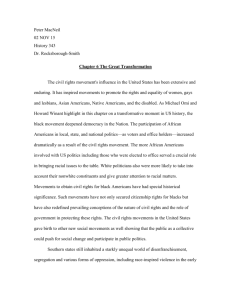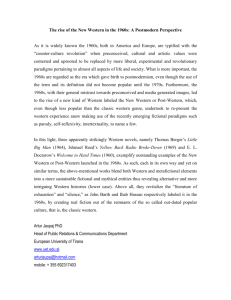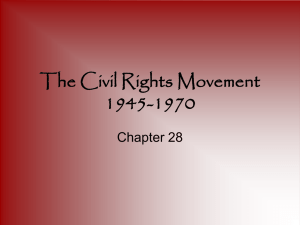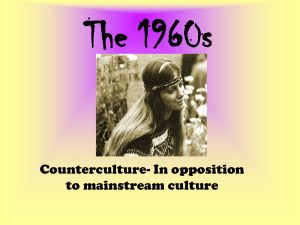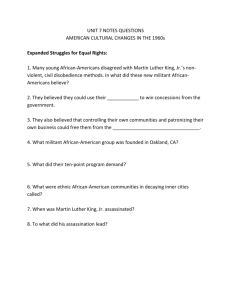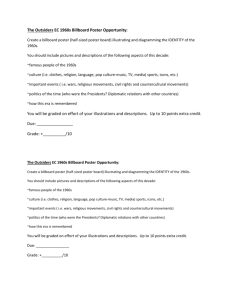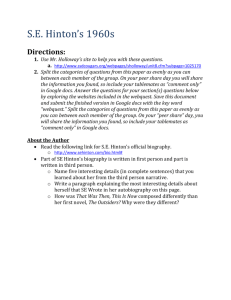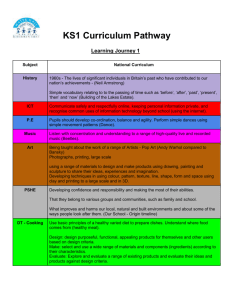One of the distinguishing features of the 1960s was the rise of group
advertisement
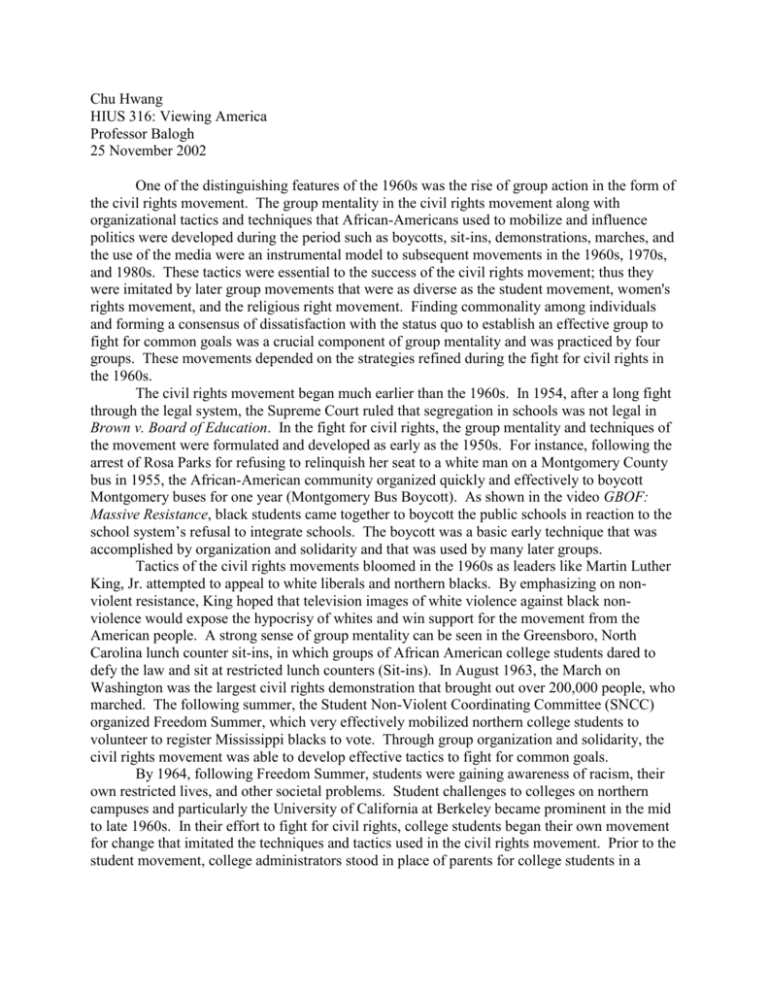
Chu Hwang HIUS 316: Viewing America Professor Balogh 25 November 2002 One of the distinguishing features of the 1960s was the rise of group action in the form of the civil rights movement. The group mentality in the civil rights movement along with organizational tactics and techniques that African-Americans used to mobilize and influence politics were developed during the period such as boycotts, sit-ins, demonstrations, marches, and the use of the media were an instrumental model to subsequent movements in the 1960s, 1970s, and 1980s. These tactics were essential to the success of the civil rights movement; thus they were imitated by later group movements that were as diverse as the student movement, women's rights movement, and the religious right movement. Finding commonality among individuals and forming a consensus of dissatisfaction with the status quo to establish an effective group to fight for common goals was a crucial component of group mentality and was practiced by four groups. These movements depended on the strategies refined during the fight for civil rights in the 1960s. The civil rights movement began much earlier than the 1960s. In 1954, after a long fight through the legal system, the Supreme Court ruled that segregation in schools was not legal in Brown v. Board of Education. In the fight for civil rights, the group mentality and techniques of the movement were formulated and developed as early as the 1950s. For instance, following the arrest of Rosa Parks for refusing to relinquish her seat to a white man on a Montgomery County bus in 1955, the African-American community organized quickly and effectively to boycott Montgomery buses for one year (Montgomery Bus Boycott). As shown in the video GBOF: Massive Resistance, black students came together to boycott the public schools in reaction to the school system’s refusal to integrate schools. The boycott was a basic early technique that was accomplished by organization and solidarity and that was used by many later groups. Tactics of the civil rights movements bloomed in the 1960s as leaders like Martin Luther King, Jr. attempted to appeal to white liberals and northern blacks. By emphasizing on nonviolent resistance, King hoped that television images of white violence against black nonviolence would expose the hypocrisy of whites and win support for the movement from the American people. A strong sense of group mentality can be seen in the Greensboro, North Carolina lunch counter sit-ins, in which groups of African American college students dared to defy the law and sit at restricted lunch counters (Sit-ins). In August 1963, the March on Washington was the largest civil rights demonstration that brought out over 200,000 people, who marched. The following summer, the Student Non-Violent Coordinating Committee (SNCC) organized Freedom Summer, which very effectively mobilized northern college students to volunteer to register Mississippi blacks to vote. Through group organization and solidarity, the civil rights movement was able to develop effective tactics to fight for common goals. By 1964, following Freedom Summer, students were gaining awareness of racism, their own restricted lives, and other societal problems. Student challenges to colleges on northern campuses and particularly the University of California at Berkeley became prominent in the mid to late 1960s. In their effort to fight for civil rights, college students began their own movement for change that imitated the techniques and tactics used in the civil rights movement. Prior to the student movement, college administrators stood in place of parents for college students in a system called “in loco parentis” (In Loco Parentis); however, in the mid 1960s, students began to question this role of colleges.

